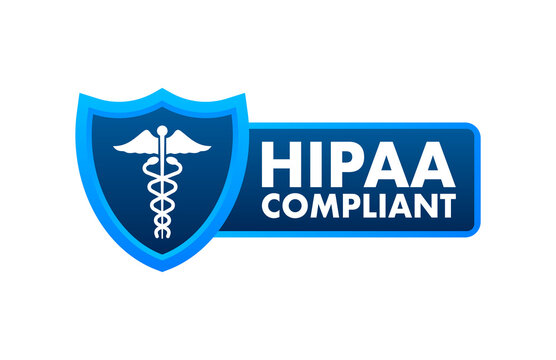You’re chopping vegetables and suddenly-oops-the knife slips. Blood is trickling down your finger, and you’re wondering: Is this bad enough for medical attention? Don’t panic.
Houston urgent care centers like Insight are equipped to handle everything from minor cuts to more serious wounds. We’ll walk you through exactly what to expect and when professional treatment matters.
Everyone has experienced it-a cut, scrape, or injury that leads us to ask, “Is a doctor’s visit really necessary?” Let’s go over all the important aspects of wound care and the times when a visit to the clinic is a must, whether you’re in Houston, TX or anywhere else.
Table of Contents
ToggleWhat Kinds of Wounds Actually Need Professional Care?
Not every scrape needs a doctor’s care, but some do. If the following list describes your injury, it rates at the high end for needing immediate expert attention and probably stitches. 1. Edges are jagged. 2. It gapes when you try to stretch the skin back together. 3. You can’t pinch it shut with two fingers. 4. It oozes blood and shows no signs of slowing down.
Typical management of small cuts, superficial scrapes, and minor burns is at home. Treatment consists of careful cleaning and basic first aid. These wounds are akin to the “walk it off” type of injuries. But some cuts, scrapes, and burns are too significant to manage on your own and signal a need for professional care.
• Cuts deeper than 1/2 inch
• Jagged edge wounds
• Bleeding that won’t stop
• Puncture wounds caused by rusty objects
• Animal or human bites
Urgent care needed is indicated by the following red flags: • Bleeding profusely • Possible infection, indicated by fever, chills, or pus • Wounds to joints or near sensitive areas • Injuries from dirty or potentially contaminated objects
The Urgent Care Wound Treatment Process
Upon your arrival at an urgent care clinic, a team of qualified medical professionals will conduct a thorough assessment of your condition. They will pay careful attention to the wound, examining it meticulously for all of the following:
- Depth
- Contamination
- Damage to underlying structures
Unlike simple cuts and scrapes, more serious wounds can and do affect muscles, tendons, and bones. If any of those structures are damaged, you’re going to need more than a butterfly bandage.
The usual approach to treatment is: 1. Thorough cleaning of the wound 2. Possible application of local anesthetic to control pain 3. Careful assessment of the need for further treatment
You May Be Interested In: What Should I Bring To My Houston Urgent Care Appointment?
Based on the characteristics of the wound, they may suggest: • Using bandages for small or not-so-serious wounds • Using surgical adhesive (also known as “surgical glue”) for clean cuts • Using stitches for deeper cuts and complex repairs • Using advanced treatments for serious wounds that require a specialized medical team
Always be truthful about the way the injury happened. This is a real pro tip. It enables medical professionals to deliver the kind of accurate care that can make the difference between life and death.
Prevention and Follow-Up: Keeping Wounds Healthy
It all begins with taking care of the wound properly. At your place, see to it that you wash the wounds well using: • Soft soap and water • Antiseptic solution • A gentle patting motion—never rubbing
Be vigilant for warning signs of infection such as: • Greater redness • Sizeable swelling • Unusual warmth around the wound • Discharge that seems out of the ordinary • A rising temperature
If you note any worrisome changes or if healing appears to be slow, we suggest that you set up a follow-up appointment at our convenient location.
Cost and Convenience: Why Urgent Care Makes Sense
Urgent care provides a balance between the spending seen in ER visits and the delayed access to a primary care office. Normal visits to an urgent care center have price tags that are usually a fraction of the expense of a trip to the emergency room.
Many insurance plans, including Medicare and Medicaid, cover urgent care at the same or similar rates as visits to a primary care doctor. When urgent care does not result in an extra copayment, the price with insurance can be $75 to $100. Without insurance, you pay upfront, so it is helpful to know that the cost is usually between $100 and $200.
Compared to the potentially hours-long waits in the ER, the times for treatment in urgent care are usually under an hour and often much quicker. Most insurance plans cover urgent care visits, making it a very affordable option.
Crucial Medical Disclaimer: Always speak with your doctor first before beginning or discontinuing any kind of treatment. When uncertain, always go with the kind of medical advice only a doctor can give.
For precise costs, insurances questions, or particular details, we suggest phoning your nearby urgent care clinic.
Remain safe; tend diligently to your injuries; and if you’re feeling at all uncertain, consult a specialist in mental health. There’s a professional out there just waiting to help you!
Final Words
Your health matters. Whether it’s a kitchen mishap or weekend sports injury, professional wound care is just a quick visit away.
If your wound is extremely deep, won’t stop bleeding, or shows signs of serious infection, always head to the emergency room. At Insight Urgent Care, we treat dozens of wounds daily—we’ve got your back (and your cuts).



